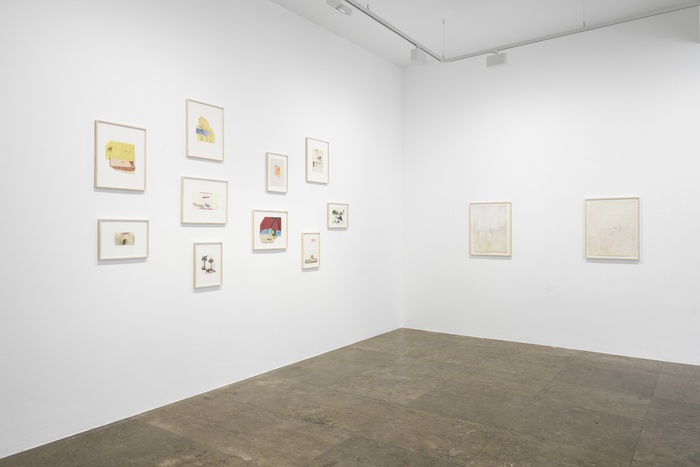

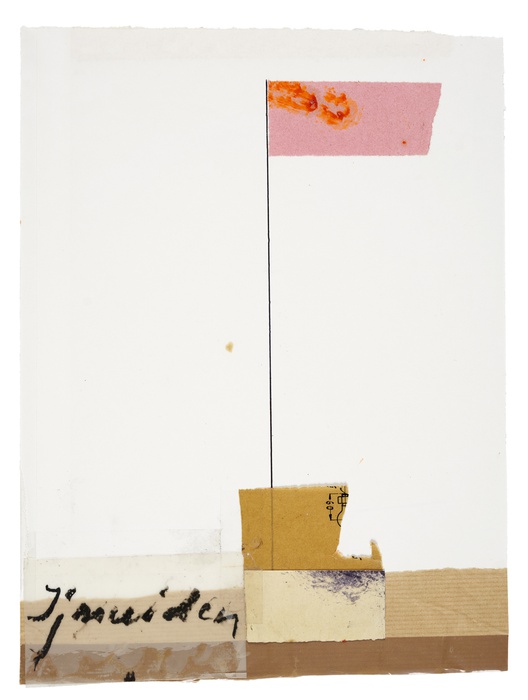
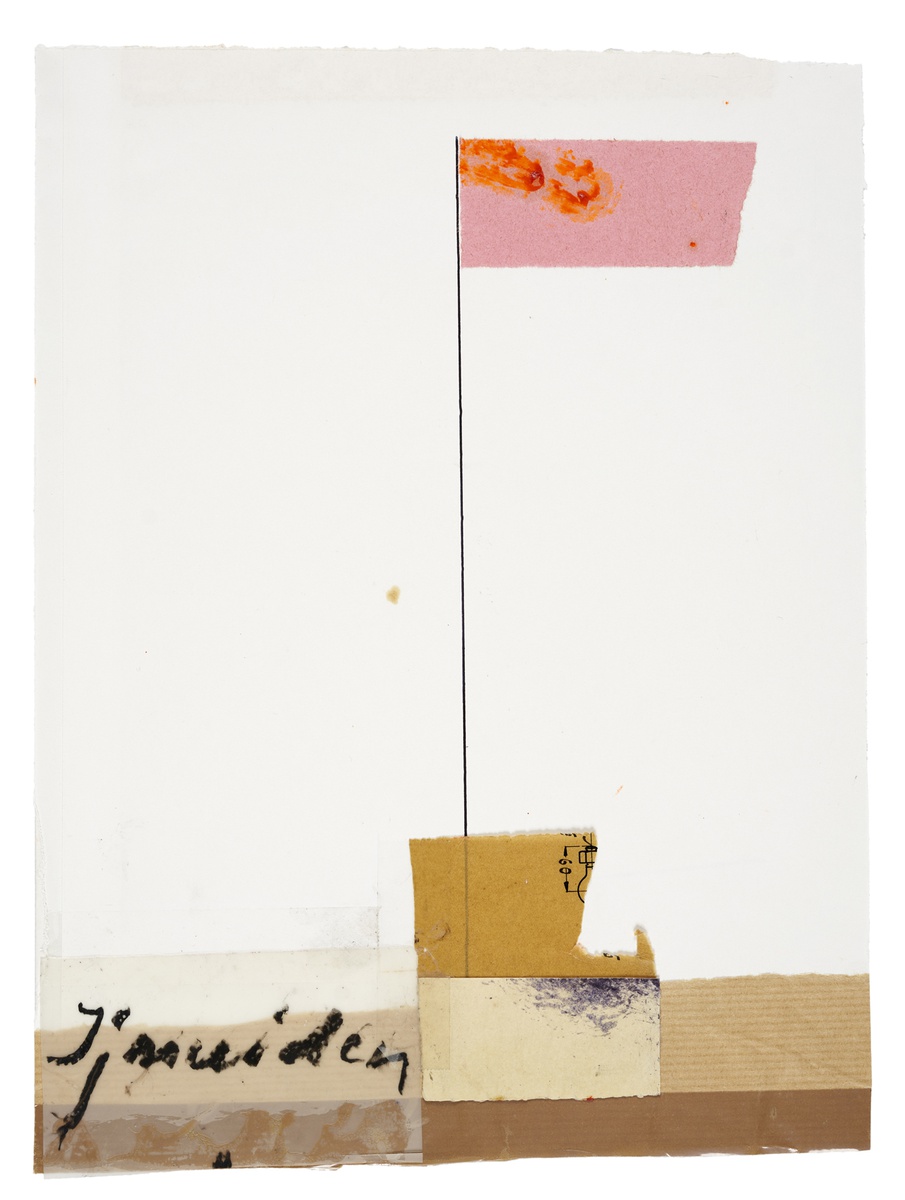
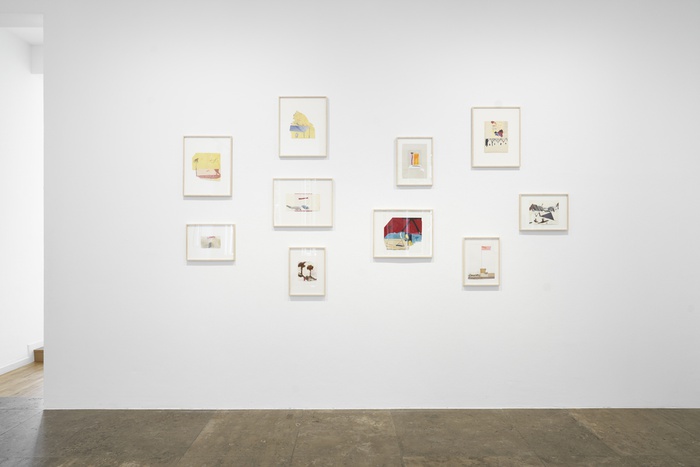
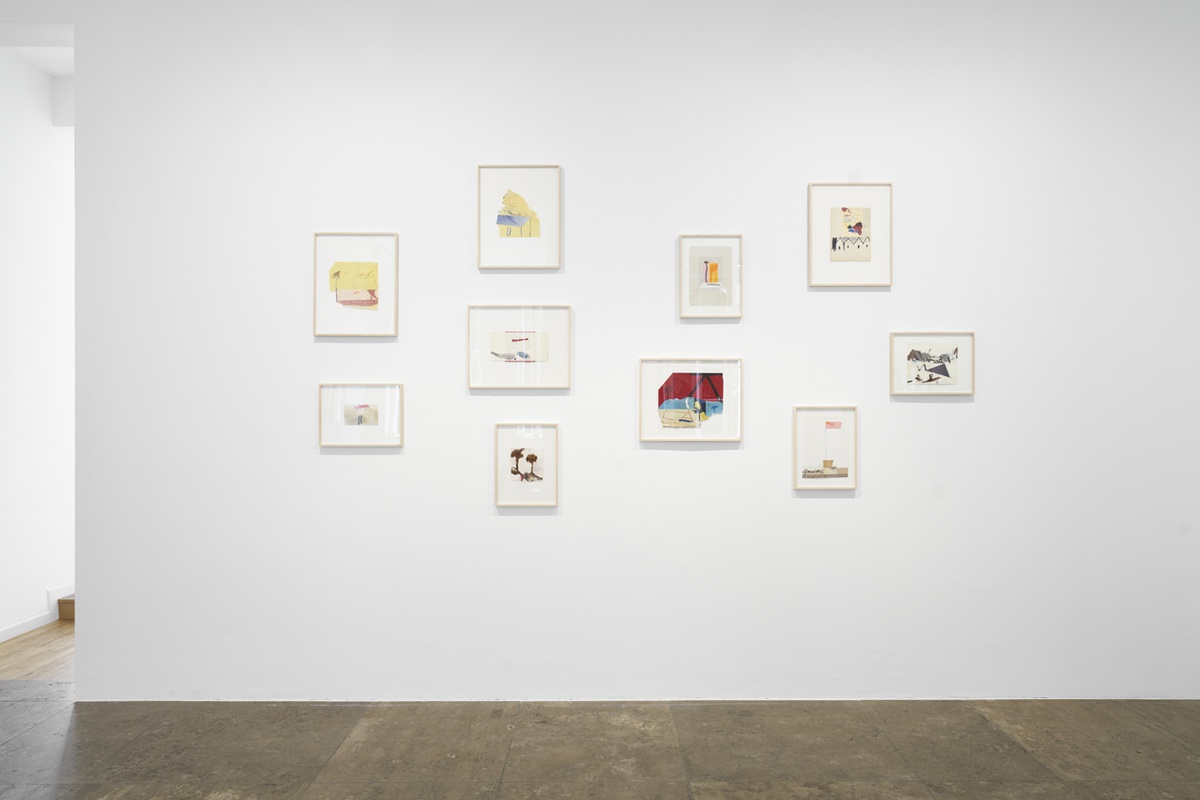
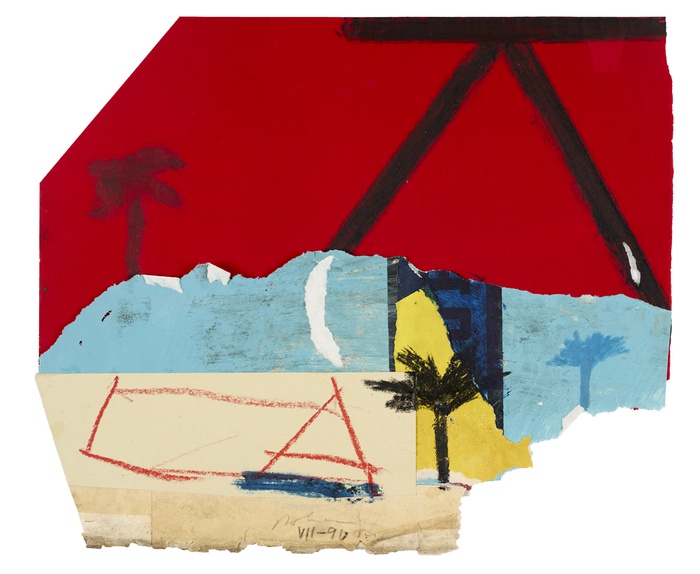
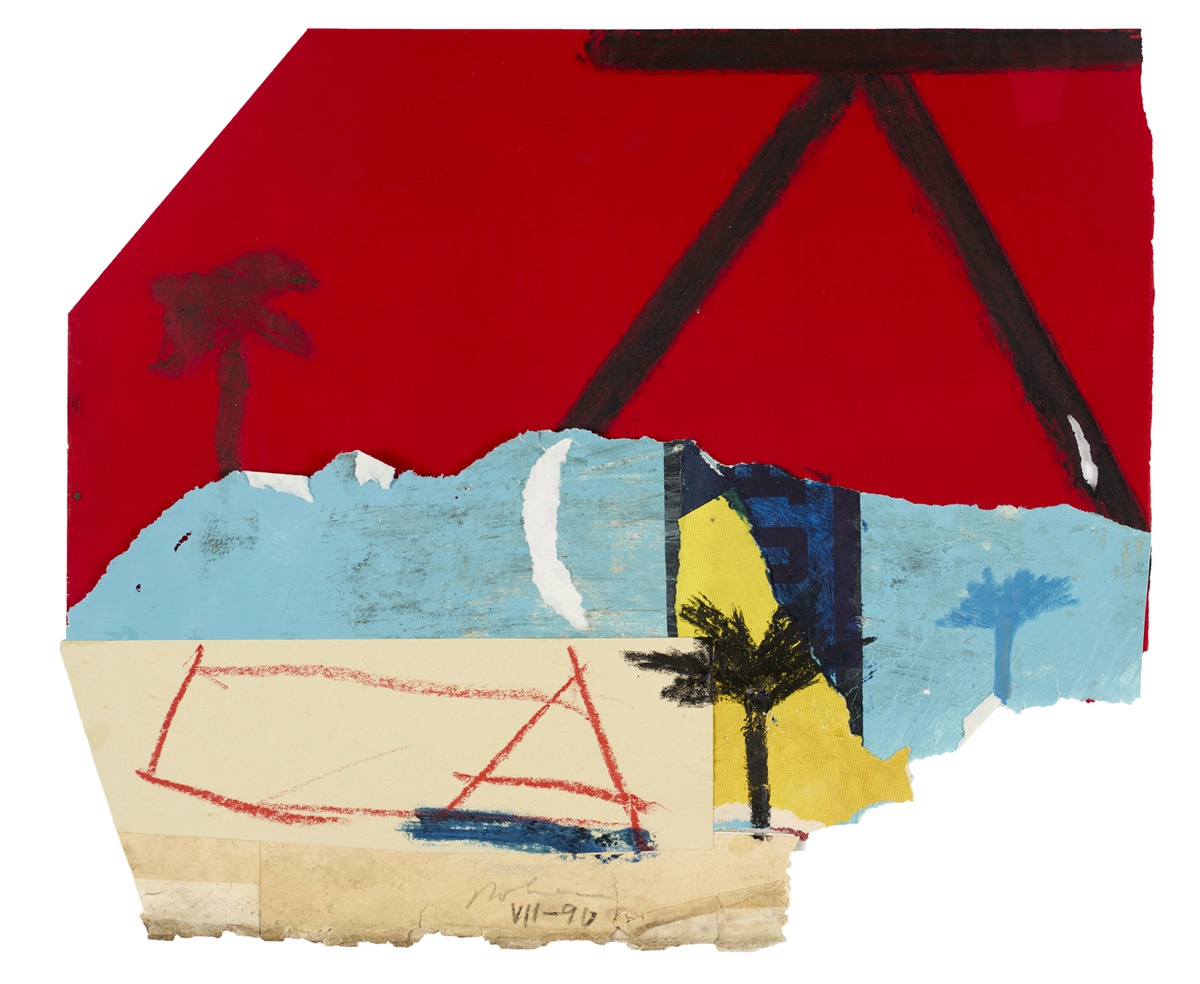


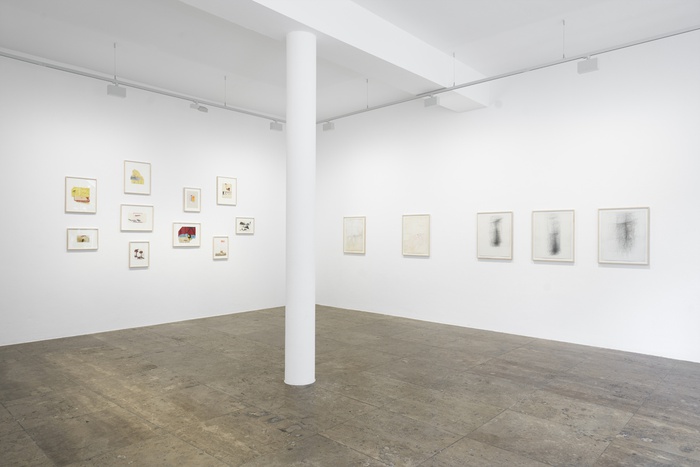


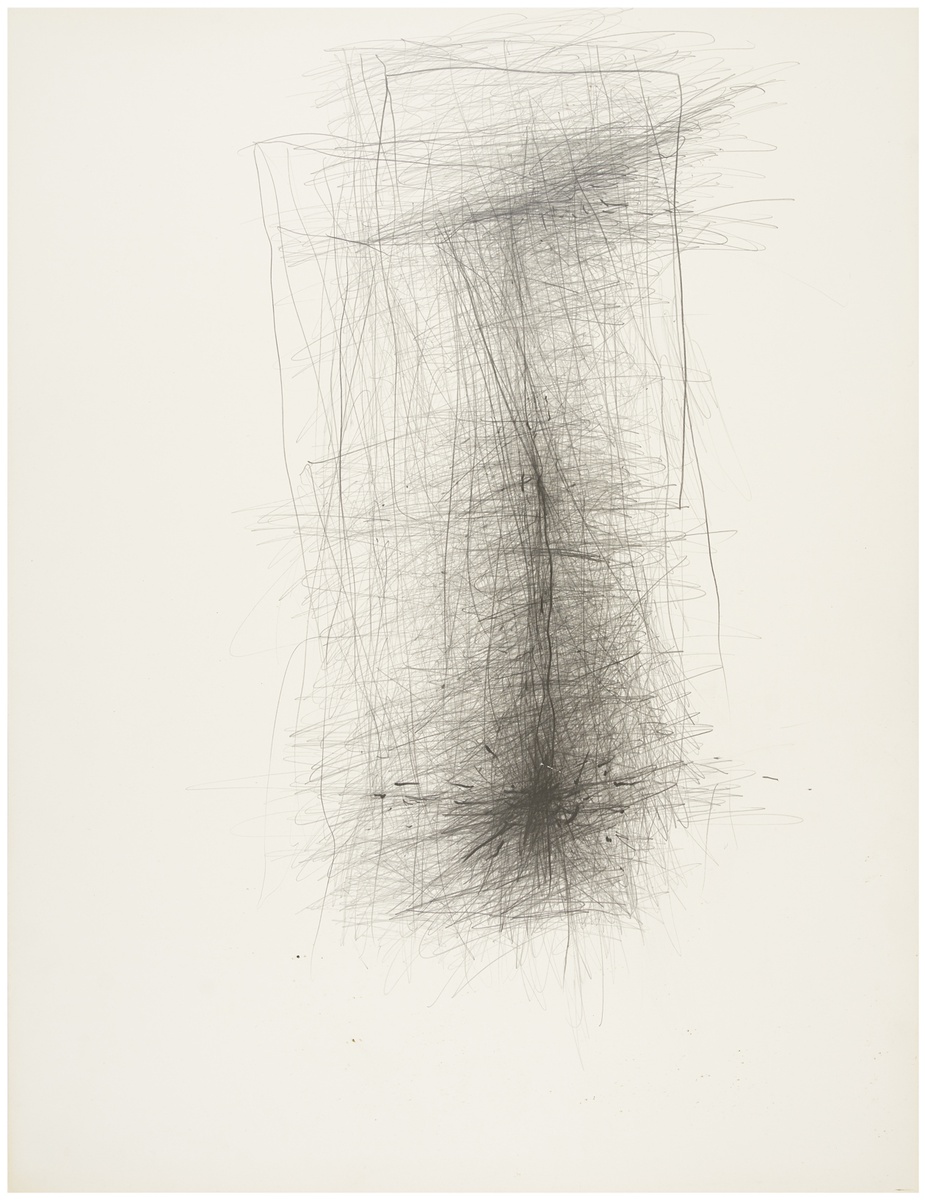

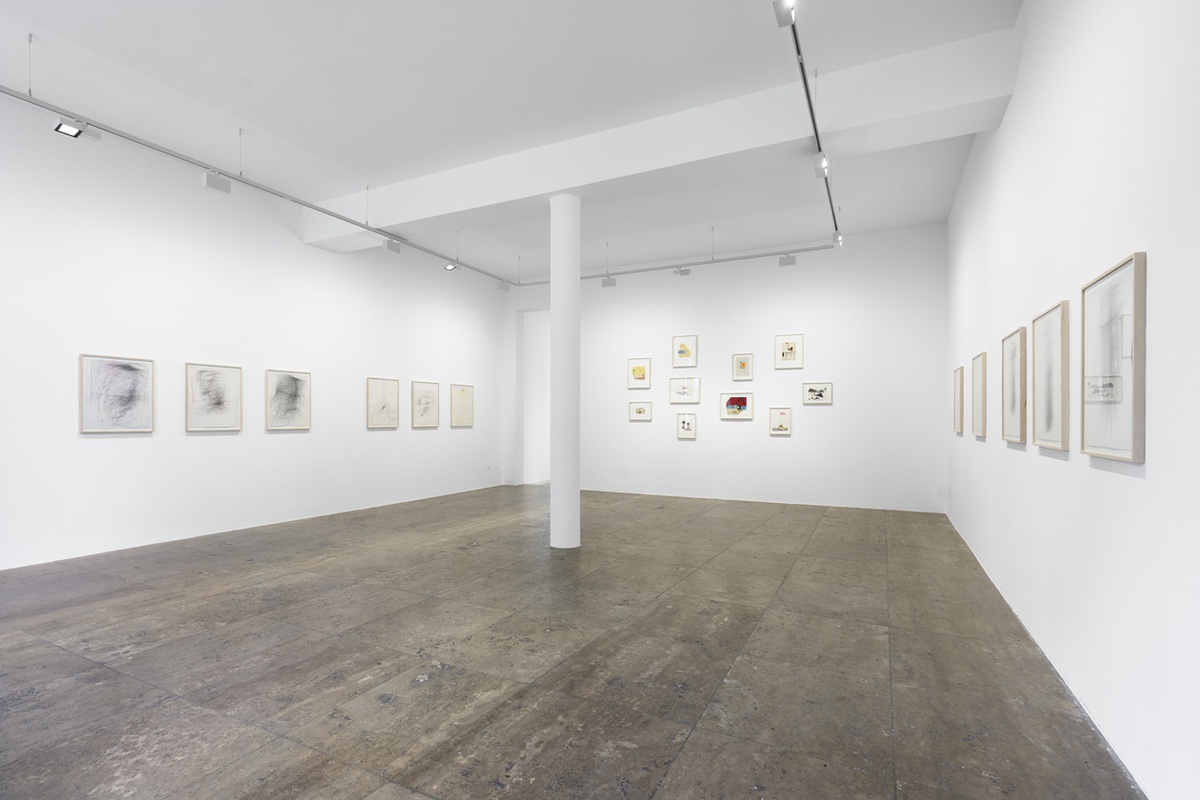



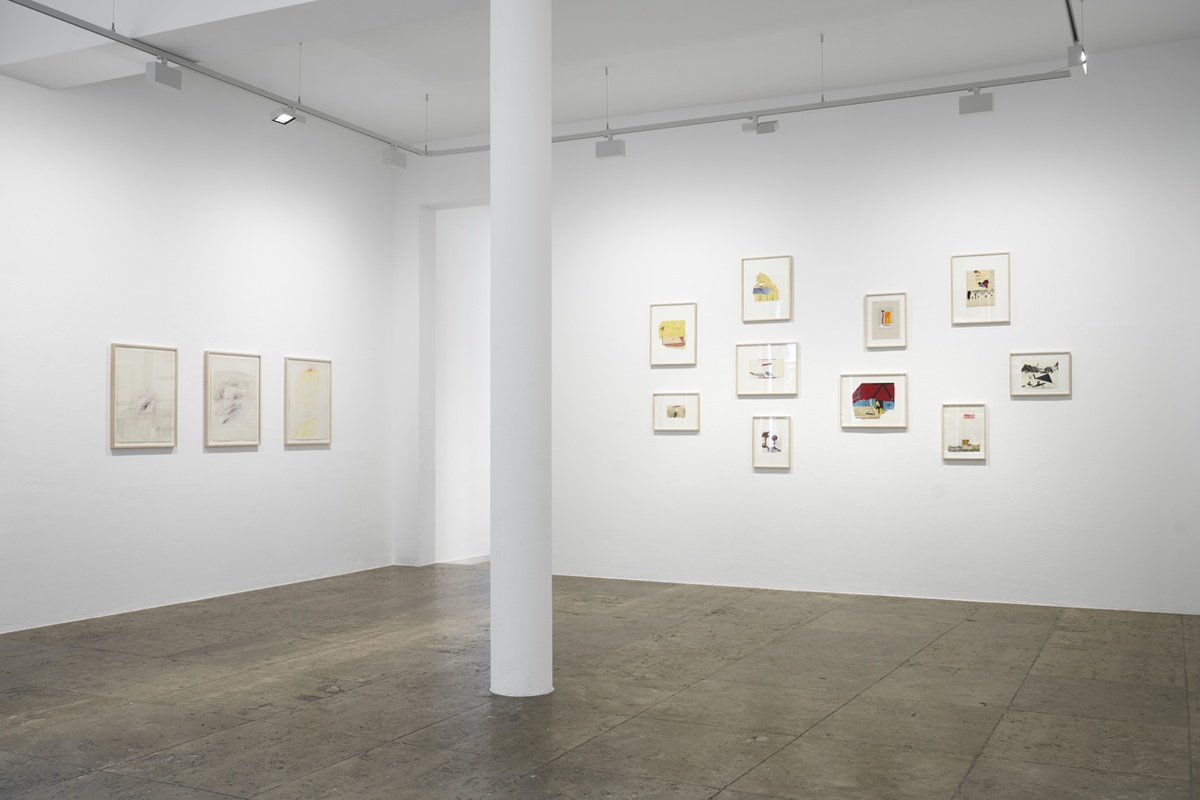


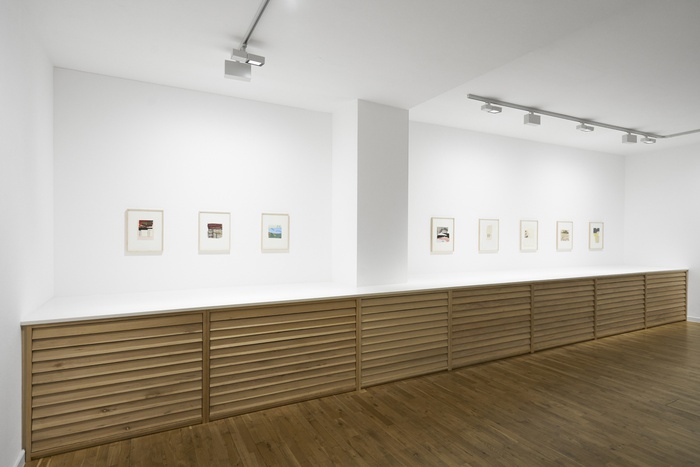
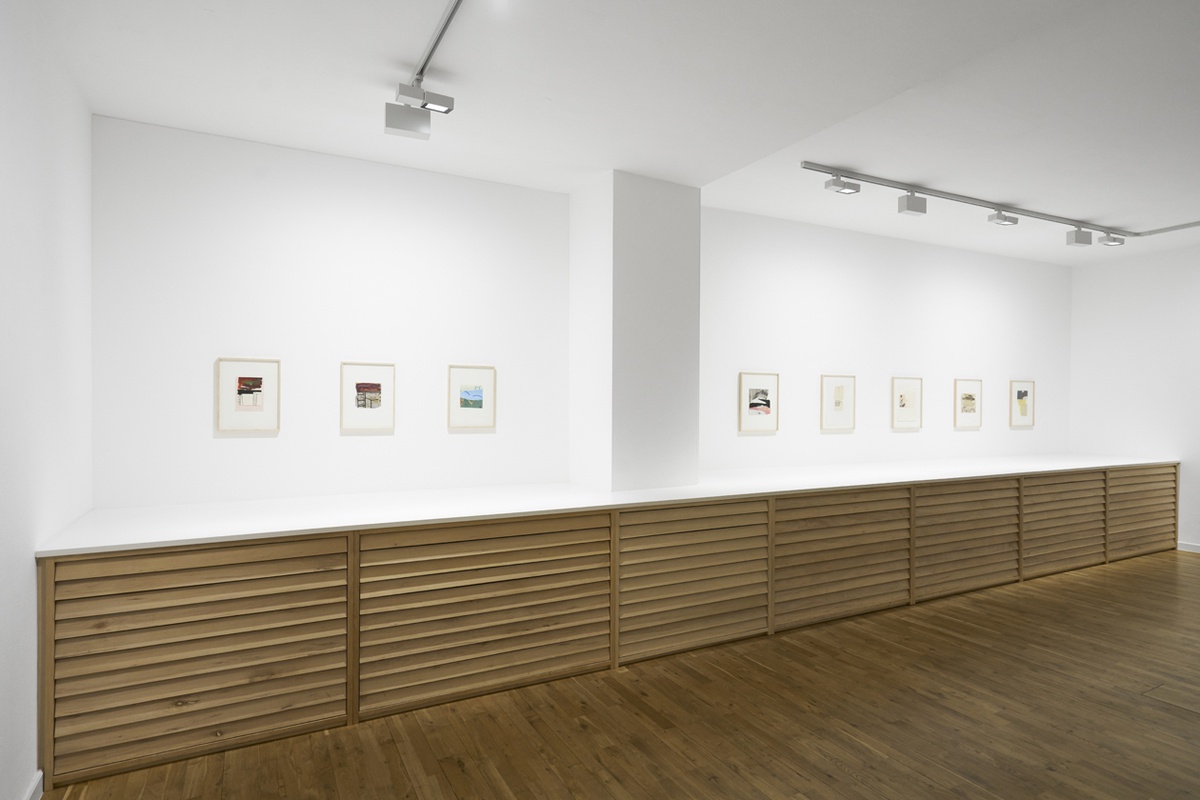
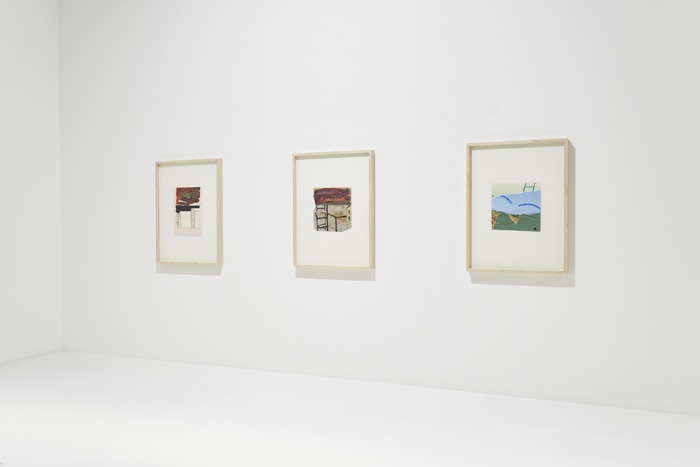
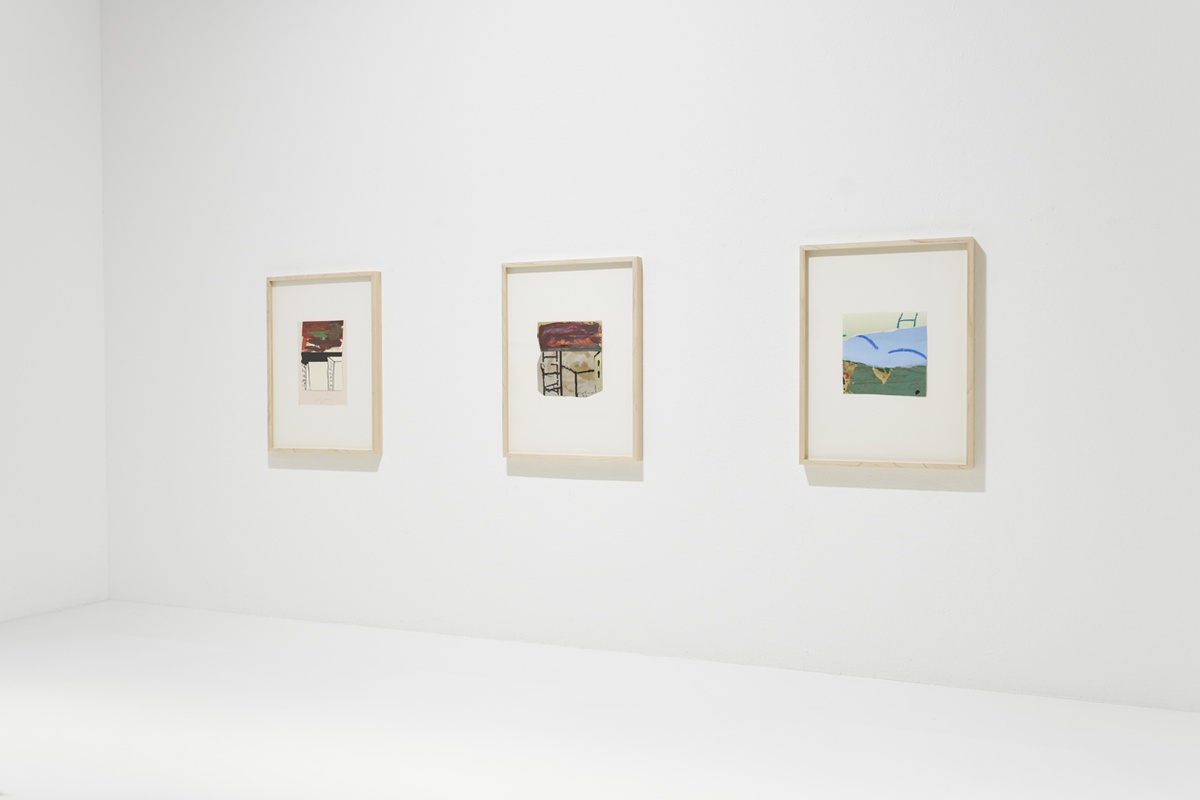

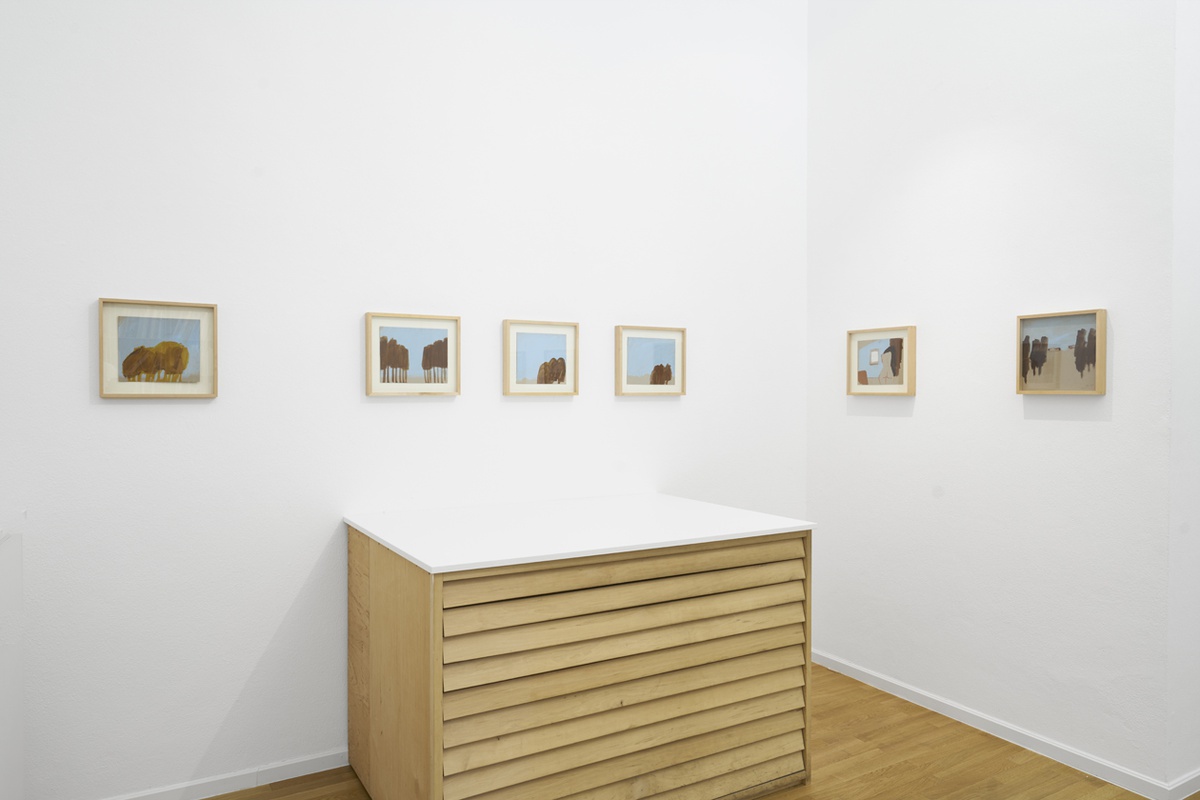
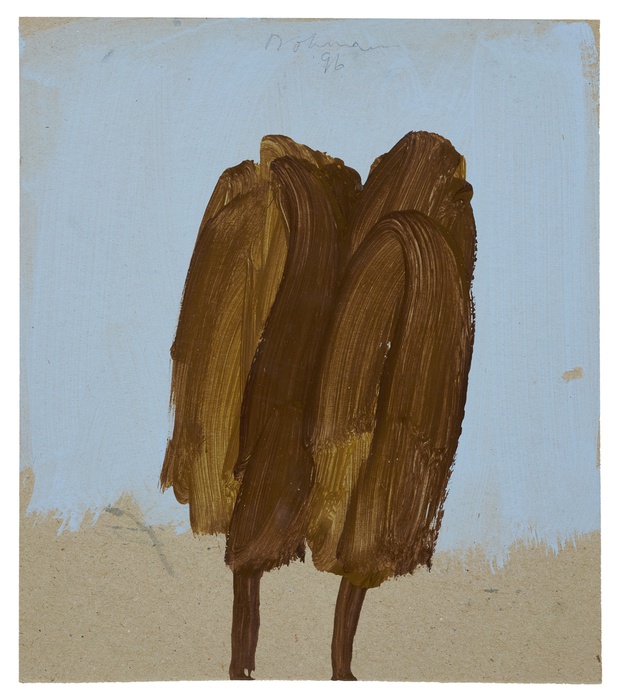
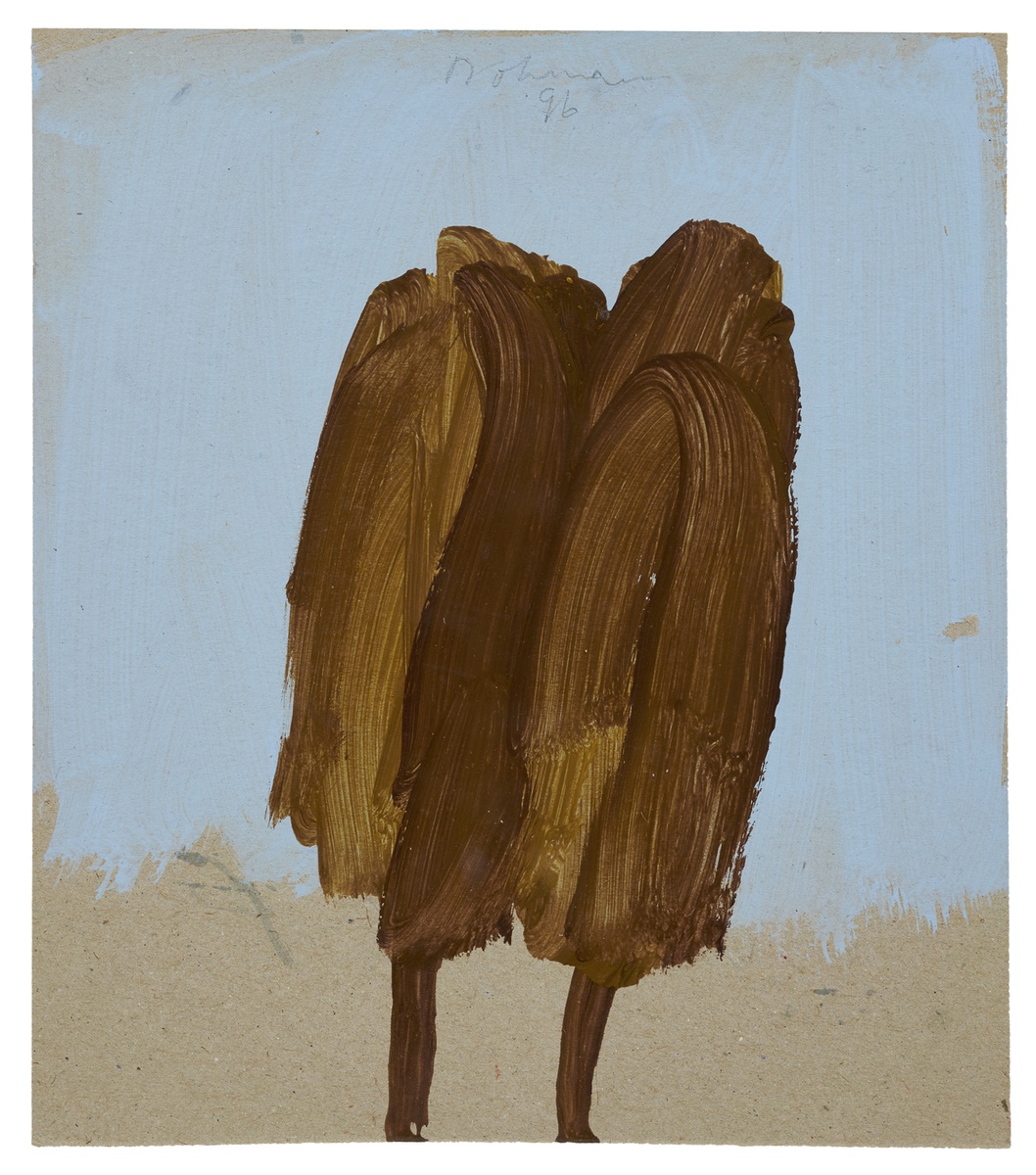
Installation view, Jahn und Jahn, Munich, 2019
collage, oil crayon, pen on envelope
30,8 x 22,8 cm
Installation view, Jahn und Jahn, Munich, 2019
collage, decollage, and red paper, oil crayon, pencil
27,5 x 32,2 cm
collage with writing paper and written papers, oil crayon, pencil, graphite, ink, pen, oil
27 x 20 cm
Installation view, Jahn und Jahn, Munich, 2019
pencil and graphite on paper
65 x 50 cm
Installation view, Jahn und Jahn, Munich, 2019
pencil, crayon, graphite on paper
65 x 50 cm
Installation view, Jahn und Jahn, Munich, 2019
Installation view, Jahn und Jahn, Munich, 2019
Installation view, Jahn und Jahn, Munich, 2019
Installation view, Jahn und Jahn, Munich, 2019
Installation view, Jahn und Jahn, Munich, 2019
acrylic on gray cardboard
24 x 21 cm
“A line must be rougher than perception, a sentence simpler than a thought, the image poorer than sight. But they must conjure abundance.” [1]
The most fascinating aspect of Karl Bohrmann’s artistic work is its deliberate simplicity. Almost coincidentally, landscapes with trees, celestial phenomena, or houses populate his images, as well as rooms with tables, windows, lamps, or chairs. During his 50-year career, the artist explored everyday subjects in drawing, prints, painting, and photography. Now, Galerie Jahn und Jahn, in collaboration with the Bohrmann Estate, which has represented him since 2007, will show three finished groups of work: alongside a series in acrylic and collages, drawings from 1961 to 1963 will be presented, in which dense shimmering webs of lines cover the paper. They gather together in knots only to contrast vividly with vacant surfaces or areas of watercolors. “Strokes are traces, […] they convey exactly the right tempo, vehemence, hesitation, uncertainty, the impetus of conviction, assessing, considering, sudden clarity, fallacy, correction, changeable stages […]”. [2] Bohrmann understands the medium of drawing as a “letter, plan, musical score” [3]; the line itself becomes an actor. Demonstrating immediacy and autonomy, it is hardly surprising that his drawings have a significant position within his oeuvre.
In contrast to the fine-lined structure of his drawings, the acrylic painting Braune “Bäume vor blauem Himmel (Brown trees against the blue sky)” from 1996 stands out as a result of its energetic brushwork. With powerful strokes Bohrmann captures whole rows of trees, sometimes just a pair, or a single specimen, or the treetops that thrust into the lower edge of the picture. The spontaneous, gestural positions are likewise reflected in the blue sky, which is unevenly applied, allowing the surface of the material – grey paper or canvas – to occasionally emerge and fade away at the edges.
The extent to which Bohrmann included paper as a medium in his artistic processes can be seen in the selection of collages from the years 1990 to 1994 to be shown in the exhibition. The artist combined ripped posters, envelopes, airmail paper, or stained, crumpled, written-on notes with graphite, pencil, oil pastel, or acrylic. He also implemented the principle of chance, much valued by his teacher Willi Baumeister. Alongside color, form and materiality, his compositions are determined by the masterful interplay of surface and line: structures that play freely or are hardly visible are juxtaposed with striking details. The works, which alternate between abstraction and figuration, always reveal a sense of spatial structures. Bohrmann created a multi-layered pictorial universe which connects the simple with the poetic, the ephemeral with the permanent, and the still with the spontaneous.
Karl Bohrmann (1928 Mannheim – 1998 Cologne) studied at the State Academy of Fine Arts Stuttgart from 1948 to 1949 under Willi Baumeister, who has recently been given a solo exhibition at Jahn und Jahn. From 1972 to 1980 he taught at the Städelschule in Frankfurt and was also the head of the Städel Evening School. In 1977 he took part in the documenta and has received various prizes and scholarships, most recently in 1987 when he was awarded the “Kunstpreis der Künstler” in Dusseldorf. Apart from numerous solo shows, among them at diverse art associations (Kunstvereine), at the Städtische Kunsthalle Mannheim, Mannheim, Villa Massimo, Rome, or recently at the Richard Haizmann Museum, Niebüll (with catalogue), his work has been presented in several museums in Munich, such as the Lenbachhaus, Staatliche Graphische Sammlung/Neue Pinakothek, Pinakothek der Moderne, and the Bayerische Akademie der Schönen Künste (each with catalogue).
[1] Bohrmann, Karl: Notizen 1972 – 1986. Frankfurt/Main 1988, 40.
[2] Bohrmann, Karl: Über das Zeichnen 2, April 1971, in: Karl Bohrmann. Akte des Zeichnens. Radierungen, Zeichnungen, Collagen, 1950–1980, Städtische Kunsthalle Mannheim, Mannheim 1981, 11.
[3] ebd. 10.